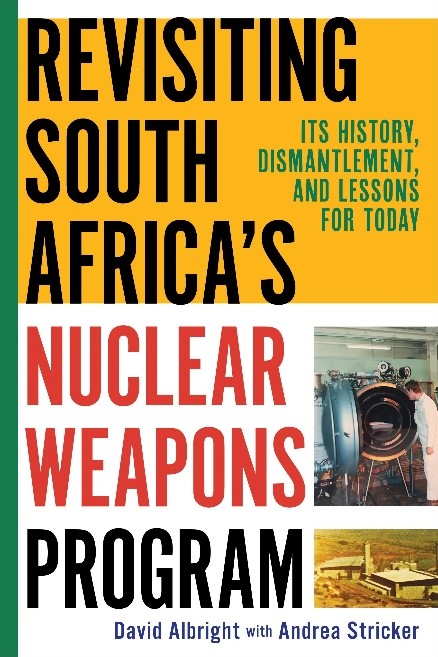Latest Reports
Iran’s Likely Violations of Section T: Computer Modeling Relevant to Nuclear Weapons Development
by Mark Gorwitz, Mohammadreza Giveh, and David Albright
September 10, 2024
Highlights
Iran has developed elaborate cover stories for its nuclear weapons development activities, as seen in the Nuclear Archive and elsewhere. 1 It is a strategy that evolved from the Amad Plan, Iran’s crash nuclear weapons program in the early 2000s. Iran conducts work that continues Iran’s nuclear weapons development by calling it civilian or non-nuclear military work. Over the years, studying Iran’s open-source scientific and engineering literature has revealed work related to nuclear weapons development with varying foci and fluctuating intensity and relevance to nuclear weapons, serving as an important indicator of Iran’s priorities.
This report concentrates on computer modeling related to nuclear weapons development. It is based on a survey of several hundred recent Iranian academic scientific publications, of which 157 articles were selected for detailed scrutiny. These publications were selected because they discussed weaponization-related technology with an emphasis on computer modeling potentially relevant to nuclear weapons development. Computer modeling is an intrinsic part of nuclear weapons development and thus of high value for Iran, while being easily disguised with cover stories that are often difficult to assess or see through.
Although Iran has a long history of hiding nuclear weapons work across a broad spectrum, this report focuses on computer modeling related to nuclear weapons development conducted recently, specifically after 2016 when the Joint Comprehensive Plan of Action (JCPOA) was implemented. Through section T of its Annex 1, this plan attempted to address concerns about activities relevant to potential nuclear weaponization. That section requires Iran not to engage in specific activities, which could “contribute to the design and development of a nuclear explosive device.” The first article of Section T prohibits the “designing, developing, acquiring, or using computer models to simulate nuclear explosive devices.”
Despite the prohibition, a large number of recent Iranian scientific studies demonstrate that Iran is disregarding, likely violating, the modeling aspects of Section T. It has advanced its nuclear weaponization efforts in a decentralized manner with academic covers. Through this, the regime is acquiring additional knowledge and capabilities in regard to “designing and developing” nuclear weapons.
Iran has used computer codes to evaluate and simulate many scenarios, materials, properties, parameters, and reactions that may be relevant to nuclear weapons development, allegedly for, or under the cover of, civilian nuclear applications or non-nuclear military applications.
These studies collectively also reveal that Iran has established an extensive civilian and military scientific and engineering research and development infrastructure that can contribute significantly to building nuclear weapons and aiding in advancing the program, once initiated. Its infrastructure and personnel capabilities can significantly shorten the time needed to build nuclear weapons and better ensure their reliability, once the Iranian regime makes the decision to build nuclear weapons.
At the heart of any Iranian nuclear weapons effort is SPND, a DARPA-like Defense entity, which evolved from the Amad Plan and still holds many of the personnel and material assets of the Amad Plan. According to the Defense Ministry’s spokesman, “SPND has contractual cooperation with 100 universities and 1,200 knowledge enterprises and provides service to all branches of military forces.” 2
In addition, this survey of Iranian scientific publications demonstrates:
- Iran’s use of computer modeling to advance its nuclear weaponization capabilities is ongoing today.
- Iran’s ability to modify open-source computer codes has helped shorten and improve its simulation work associated with nuclear design efforts.
- Iran has the ability to integrate experimental results into current design codes, and the revised codes can further advance both the accuracy of these codes and the ability to undertake simulations. These simulations are likely to lead to new improvements in codes, leading to conducting additional experiments, whose results can be incorporated into the computer modeling, leading to further improvements.
- Iran’s work on supercomputers, as seen in these studies, opens a way to port existing codes into a supercomputing environment, a step leading to even further advances in nuclear weapons design.
- The government’s network in universities is growing. While a portion of the detected weapons-related work has been conducted at facilities and by people previously known to be related to the regime’s weapons program, new facilities and departments are participating, possibly to scatter the work and obstruct visibility even further.
1. David Albright with Sarah Burkhard and the Good ISIS Team, Iran’s Perilous Pursuit of Nuclear Weapons (Washington, D.C.: Institute for Science and International Security Press, 2021).↩
2. “The Parliament’s gift to the Ministry of Defense/How does the SPND help the armed forces”, [Translated from Farsi], KhabarOnline, April 2, 2024, khabaronline.ir/xm8sQ. ↩
 twitter
twitter




